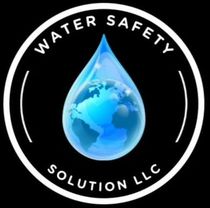WATER
What you need to know!
Water Is Life
Water Safety Solution is a company devoted to not only having an A+ rating but also providing years of service to the Houston area and Texas. We enable people to realize that they deserve access to high-quality water, and we flourish by educating people about the long-term health advantages of drinking and using higher quality water.
Our goal extends beyond simply supplying products and services; we are dedicated to giving unrivaled value through our cost-effective offerings. We not only provide high-quality items, but also reasonable prices to ensure you receive the most value for your financial investment.
KDF 55
KDF 55 Process Medium is a high-purity copper-zinc alloy. When used in a water treatment unit, it undergoes a chemical process known as redox. Redox is short for oxidation-reduction, which is a chemical reaction where electrons are transferred between molecules. In some cases, such as free chlorine, this transfer results in the formation of benign substances, such as chloride in this case, which then passes through the filter. In a similar way, copper, lead, mercury, and other heavy metals react to plate out onto the medium’s surface effectively being removed from the water supply. KDF 55 Process Medium is so effective that it removes up to 98% of inorganic water-soluble heavy metals that are a concern to many public health officials and many consumers. In addition, KDF 55 Process Medium controls microorganisms and reduces lime scale in problem areas like showers and tubs. KDF 55 Process Medium even changes waterborne calcium molecules that inhibit scale buildup and improves the taste of some of your favorite beverages
What is Catalytic Carbon?
- Activated Carbon:
- Catalytic carbon starts as activated carbon, a porous material made from carbon-rich sources like coconut shells or coal. The high surface area of activated
- carbon allows it to adsorb various impurities from water.
- Surface Modification:
- Catalytic carbon is then treated to modify its surface structure, often through high-temperature gas processing.
- This treatment increases the carbon's catalytic activity, meaning it can facilitate chemical reactions.
- Catalytic Properties:
- The key difference between regular activated carbon and catalytic carbon is the catalytic activity.
- Catalytic carbon is specifically designed to
- catalyze the breakdown of chloramines and hydrogen sulfide.
How it Works:
- Chloramine Removal:
- Catalytic carbon reacts with chloramines (a combination of chlorine and ammonia), breaking them
- down into harmless chloride and ammonia.
- Hydrogen Sulfide Removal:
- It also effectively removes hydrogen sulfide, which causes unpleasant odors and tastes in water.
- Adsorption:
- Besides catalyzing chemical reactions, catalytic carbon also
- adsorbs other impurities, similar to regular activated carbon.
Benefits of Catalytic Carbon:
- Improved Water Quality:
- Catalytic carbon enhances the taste and odor of
- water by removing chloramines and hydrogen sulfide.
- Chloramine Reduction:
- It's particularly useful in areas where chloramines are used for disinfection,
- as it effectively removes them.
- Enhanced Filtration:
- Catalytic carbon is often used in water filtration
- systems for both residential and commercial use.
- Longer Lifespan:
- Compared to standard activated carbon, catalytic carbon
- can have a longer lifespan, especially when used for chloramine removal.


